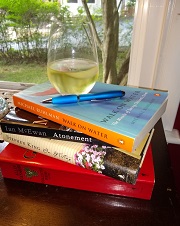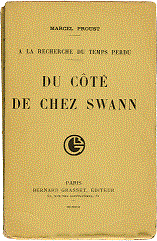A fact-checker’s lament.
“You don’t know what you’re talking about.”
The Wall Street Journal reporter who’d written the feature I was fact-checking for the American Journalism Review insisted he had spelled his source’s name correctly.
“But I called him,” I replied.
“You don’t know what you’re talking about,” he repeated.
I believe he hung up at this point, but my memory remains vague on that part. I do know this was the start of my journey down the rabbit hole of fact-checking other writers’ work, and while some appreciated the assist and thoroughness, most balked at being told they’d gotten something wrong.
I eventually brought my research/fact-checking skills over to National Geographic, where I created elaborate research packets for writers on topics like orangutans. I worked with two other women in their early 30s also working on their own books and eager for a part-time job that allowed them time to write. We were slumming it, we’d say, laughing, as non-writers and non-editors and the lowest on the totem pole. But the editors always made us feel we mattered and would push us to do all we could to get things right.
“Call Sir Edmund Hillary and confirm that,” the editor of National Geographic for Kids told me. I can’t recall precisely what the article was about, and new to international calls, I had to ask around for how to reach New Zealand, where Hillary was living at the time.
I called. I believe I was checking on something more significant than a name spelling.
“Hello, is Sir Edmund Hillary there?” I asked. “This is Mary Collins from National Geographic.”
“Dear,” his wife responded after fumbling with a receiver, “it’s 2 in the morning here. Please call another time.”
Click.
When I finally started writing my own articles and books, I bumped into a different sort of fact-checking problem. For my first book, The Essential Daughter: Changing Expectations for Girls at Home, 1797 to the Present, I wrote portraits of how girls lived in different eras in America based on their diaries, letters, and other archives. I mirrored the concept of the fictional American Girl series, but all of my stories were true, and for those featuring still-living women, were based on extensive in-person interviews.
My publisher wanted fuller narratives, especially in the earlier chapters on girls growing up in precolonial times or during the Civil War.
“But it’s not in the records,” I countered. “I don’t have fuller personal accounts.”
She didn’t care, but I did, and they had to accept things as they were, not as they wished they could be. In my mind, if the reader knows what you’ve written is — to the best of your ability — true, then any powerful scenes that emerge will have greater impact. While reporting on The Essential Daughter, for instance, a father and daughter really did start a shouting match in front of me as they debated whether she’d ever wanted all those hours in the pool in hopes of making the Olympic team. The mother sat horrified on the couch watching them tell the truth to each other for the first time as my tape recorder ticked away.
So what did I learn from people like Bill Monroe, former anchor of “Meet the Press” and my editor at the American Journalism Review? (Actually, if the Independent fact-checked that, they’d discover it was called the Washington Journalism Review when I worked there.) Mistakes are distracting and undermine credibility. If you don’t care enough to spell a source’s name correctly, why should I have faith in any part of your story?
It took me a year to publish my first feature in the American Journalism Review. Monroe kept rejecting my attempts because of incomplete research, bland angles, flat prose — every issue I would’ve studied if I’d gone to journalism school. Instead, I had Bill Monroe.
Finally, I wrote a story about how press secretaries on Capitol Hill videotaped their congressional representative and then just sent the tapes back home to local TV stations that would run them unedited and with no information about the source.
Pure PR, I argued, but Monroe liked the idea. I reported and wrote the piece. He accepted it and put it on the cover of the magazine. The following month, he had to run a correction because of an error in the story. I remember that small box, outlined in black, standing out against the Letters section. Since I was head of fact-checking, no one else had checked my story, so there it sat, the mistake.
I don’t remember what I got wrong. I just remember I did not get it right.
And thanks to all the mentors I’ve had over the years, I cared, just as we should all care, or we lose track of what it is we’re really sharing when we write stories about important topics. Studies show that people rarely change their views if you present them with facts but will listen if you give them a narrative full of characters they might relate to.
But shifts in views only last for a brief time; empathy is fleeting. Ultimately, we are left with the facts, yet so few people are watching over them.
I’ll close with a story my husband shared when I told him I planned to write this essay. A few years ago, while doing a TV interview for a local station, the interviewer kept calling him Todd, even though his name is Scott.
At the break, he told her, “My name is Scott.”
“No, it isn’t,” she insisted.
But, of course, it is. Sometimes, facts are facts.
Mary Collins directs the Writing Minors at Central Connecticut State University and teaches in the Yale Summer Writing Program.

